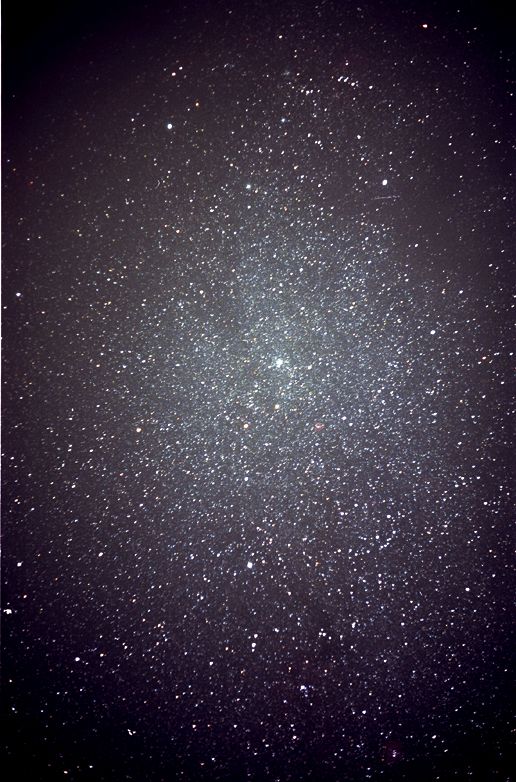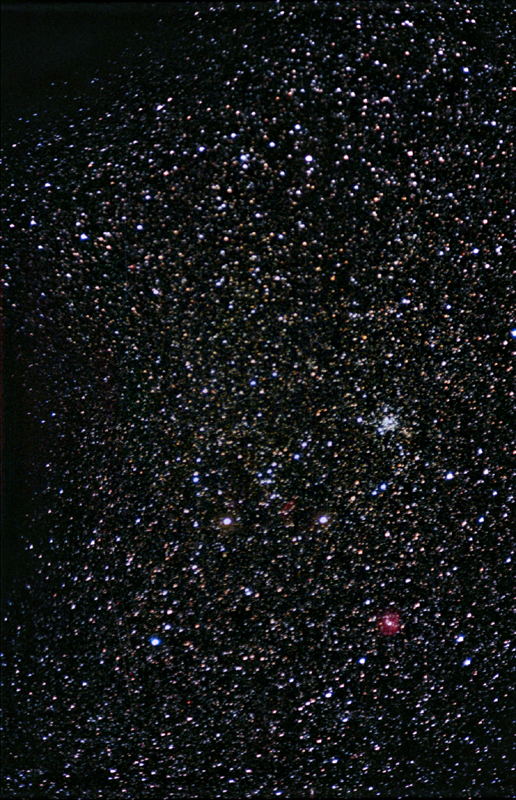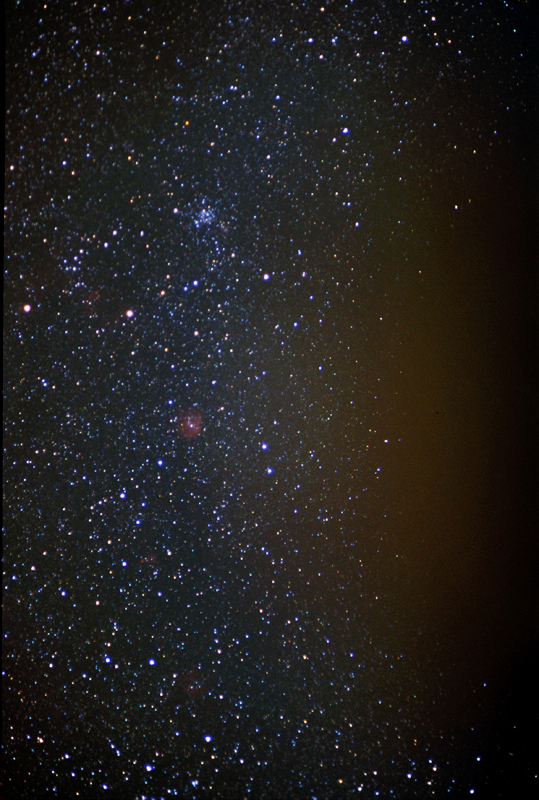
30 minutes exposure on Kodak Ektachrome 400 film, using a 100mm f/2.8 Pentax lens.

This photograph is centred on the constellation of Gemini. Also shown are some parts of Cancer, Auriga, Monoceros and Canis Minor. Although covering a large area of sky, including part of the Milky Way, there are few deep-sky objects in this region, large enough to appear on the photograph. A list of the deep-sky objects marked in the image is below.
| Number | Name | R.A. | Dec | |
| 1 |
Castor alpha geminorum |
7 34.6 | +31 53.3 | |
| 2 |
Pollux beta geminorum |
7 45.3 | +28 01.6 | |
| 3 |
M44 NGC 2632 The Beehive cluster |
8 40.4 | +19 40 | Image |
| 4 |
Alhene gamma geminorum |
6 37.7 | +16 23.9 | |
| 5 | IC 443 | 6 17.9 | +22 46 | |
| 6 | Cr 89 | 6 18.0 | +23 38 | |
| 7 | M35 NGC 2168 | 6 09.0 | +24 21 | Image |
| 8 | NGC 2174/2175 | 6 09.6 | +20 29.3 | |
| 9 | NGC 2331 | 7 07.2 | +27 21 | |
| 10 |
NGC 2264 The Christmas Tree cluster |
6 41.0 | +9 58.7 |

30 minutes exposure, Fuji Super HG II 400 film. 50mm f/2.8 Nikkormat lens.
This image is centred on western Gemini, close to the open cluster M35. To the south, parts of Monoceros are shown and to the north are parts of Auriga.


45 minutes exposure on Fuji Superia 200 film. 135mm f/3.5 Tamron lens.
Near the top of the photograph is the large and bright open cluster M 35. The bright emission nebula below it is NGC 2174. Between these two objects, and towards the left, are two bright stars. The eastern one (leftmost) is the orange giant, mu geminorum, while the western one is another orange giant, eta geminorum, also known as Propus. Between there two stars is the ancient supernova remnent, IC 443.